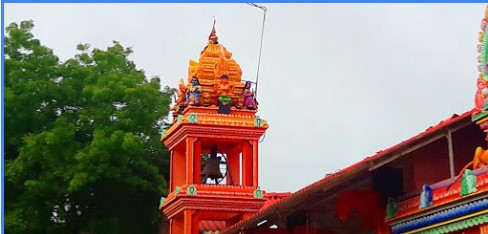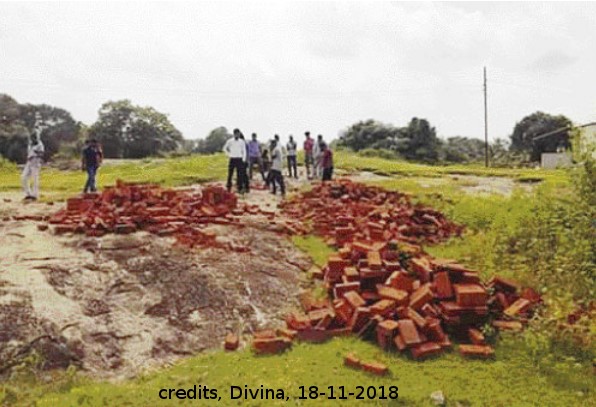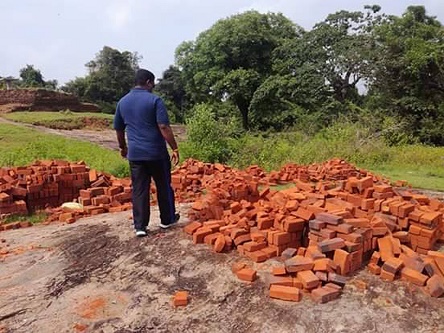Samalan Weva archeological sites and Taliban-like activity by Eelamists.
Posted on November 20th, 2018
Chandre Dharmawardana, Canada.
Samalankulam or Smalang weva has been a place name that we had included in our list of
place-names in the North and East (scroll to Samalankulam at the website:
https://dh-web.org/place.names/index.html ). This was made available to the public since approximately 2002 to 2006. Samalankulam had been listed in the 1982 Annual Report of the Archeological Department where it had identified remnants of Buddhist Stupas dating back to the Anuradhapura period or earlier.
These archeological sites suffered immensely during the Eelam wars. They are under the threat of the Bulldozer ever since the Northern Provincial Council under Mr. Wigneswaran came to power. The NPC ignored the problems of the people, and instead mounted a program of reconstructing history and destroying any historical evidence that they believed would run counter to their version of history. Let the archeologists and historians sort out the history. While that is being done, it is our duty to safeguard what evidence that exists on the ground today, as a legacy belonging to all Sri Lankans, irrespective of their ethnic territorial claims.
If we cannot physically act to safeguard the evidence, we can at least record it for posterity. As such I have updated our record for Samalanvewa (Samalankulam). It is given below, and I invite any readers to send any additional information that we can include, to make the record more complete, to the email address chandre.dharma(@)yahoo.ca
—————————————————————————————————————–
Samalankulam (Vavnimava [Vavniya] district)
SAMALANG VAEVA
This town is located between Vannimava (Vavniya) and west of Madukanda, at nearly equal distances and hence said to have earned its name සමලං. Madukanda itself is an important historical site with links to the arrival of the Sri Dalada, while Samalang weva Vihara is said to be mentioned in the Wanni Rajavaliaya (however, according to Prof. Surawera, it is regarded as a weak historical source). Samalang weva is south of both Madukanda and Vannimava, and forms the bottom tip of an equilateral triangle, where the lake is bordered on the western side by “Uma Maheswaran Rd”.
Another etymological origin for the place name that has been proposed is that the word “Samanala” has undergone an accepted type of syllabic inversion “Samanala → “samalan(a)”. Compare also, Gam-nuwara → (Gannurawa) → Gannoruwa and in Poron-nuwara → Polonnnaruwa.
(For more about such names, and Pollonaruwa in particular, see the Island Newspaper article:
https://www.island.lk/index.php?page_cat=article-details&page=article-details&code_title=37855 )
Links to a Map to the area of Samalang Weva are given in the website.
Ancient Buddhist ruins, Listed in 1982 in the Archeology Dept. annual report (and Labeled #101 in Vanni Buddhist sites map https://dh-web.org/place.names/index.html#vanni1budu-map) are found here.
The above map is interactive and sites can be clicked to get a brief write-up on the place.
There were archeological remains of stupas from the Anuradhapura period prior to the Eelam wars, as seen in The mound of an un-excavated Stupa at Samalankulama (Samanala veva, or samalan weva) where a link is given to an image. Recent constructions (since 1985) of several new Pillayar Hindu Kovils as well as established Hindu Temples are found in the area. They are
(I) Samalankulam Sri Muttumarai Amman Temple (ii) Kallumalai pillaiyar kovil,
(iii) Murugan Kovil (iii) Ellampper-Murthankulam Hindu temple (iv)Asikulam
Pillayar Kovil (v) Alladi Pillayar Kovil etc., and many more temples as one moves in the direction of
Vannimava (Vavniya) itself.

Samalankulam Sri Muttumaarai Amman Temple
The ancient Buddhist ruins (from Anuradhapura times or earlier) are neglected and are not mentioned in any guide books, as we found in our search in 2002. They were not shown in Microsoft-Encarta (now defunct) maps, nor on current Google maps. Even after the end of the Eelam wars (May 2009), no protection is afforded to the Samalang weva archeological artifacts. In fact, since the advent of the Northern Provincial Council under Chief Minister Wigneswaran, it is saddening to note that there seems to be invigorated activity designed to remove these ruins completely. This type of activity is not different to the actions of the Taliban zealots who destroyed the Bamiyan Buddha statue. Here, the removal of Buddhist artifacts is associated with a mistaken belief that it will strengthen their claims to an “exclusive Tamil Homeland”.
Note added on 19-11-2018
According to a very recent news report (e.g., Divaina, 18-11-2018), ignored by the English Language media, a group of TNA politicians had come to the Hindu Temple and provided funding, when bulldozing of the archeological site had commenced. Furthermore, archeological dept. officials who had come to inspect the site had been threatened and driven away.


A photo of the bulldozed site from at least the 5th CE, published in the Divaina Newspaper, 18-11-2018 is given here, and can be contrasted with the many flourishing Hindu temples in the area which are only a few decades old. The age of the bulldozed ruins can be gauged by a study of the bricks, and other remaining artifacts.
Chandre Dharmawardana, Canada.